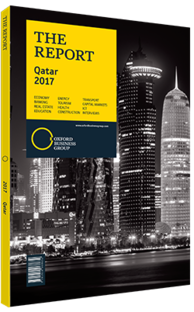Jassim bin Saif Ahmed Al Sulaiti, Minister of Transport and Communications (MoTC): Interview
Interview: Jassim bin Saif Ahmed Al Sulaiti
What role has the ministry played in overcoming the impact of the siege?
JASSIM BIN SAIF AHMED AL SULAITI: Urgent measures were taken in the first days of the siege, ensuring the fulfilment and respect of international agreements by all parties. Food security and sustainability of ongoing mega-projects is set to be Qatar’s number-one priority. Hamad Port, Qatar’s global maritime gateway, is playing an extremely vital role in this respect by extending its direct lines through Oman’s Sohar Port, as well as international lines to India, Turkey, Iran and Pakistan. In addition, Qatar has embarked on a mega-project to support food security in the country. The project focuses on designing and building specialised warehouses and state-of-the-art facilities adjacent to Hamad Port to support the nation’s food security strategy. Of course, many lessons have been learned, but the MoTC is adamant that the diversification of resources and a focus on local production will ensure that Qatar continues to advance in all respects.
How can regulatory frameworks encourage more private sector participation in national projects?
AL SULAITI: There is an increased focus on enhancing the role of national companies in mega-projects through an MoTC strategy called Private Sector Participation in Transport Projects. MoTC will finalise this strategy by the end of 2017 and provide a guide for private firms looking to participate in rail, maritime and air transport projects. The aim is to encourage and attract private investment by identifying MoTC projects that are suitable for private participation, and to launch these pilot projects with private sector participation in mind. Meanwhile, the private sector took over 60% of the value of all tenders announced for Hamad Port, which exceeds QR10bn ($2.7bn). Moreover, the private sector will be responsible for a major portion of the construction works of the second phase of the port, with projects valued at QR5bn ($1.4bn) in total expected to be completed and delivered between 2020 and 2021.
How can Hamad Port reach its target of handling 35% of the region’s trade in the next two years?
AL SULAITI: With the opening of the port, the volume of Qatar’s international trade is set to witness rapid growth – currently capturing 27% of trade in the Middle East and aiming to reach 35% in the next two years. This can be achieved by properly leveraging the facilities at Hamad Port, which is Qatar’s largest sea access point and a gateway to more than 150 destinations around the world. The port will provide the country with complete independence in its import and export of goods internationally. We will be able to export Qatari products directly from Doha to 130 countries. Through Hamad Port, Qatar will able to deal directly with partners from different countries, thus resulting in easy re-exportation from these countries to Qatar.
In what ways can the transport sector contribute to Qatar’s economic diversification?
AL SULAITI: Several projects that fall in line with Qatar National Vision 2030 continue to move at a steady pace, with many having reached completion or near completion. The number-one contributor to diversification will be the previously mentioned Hamad Port. Additionally, the Ruwais Port development project, which will allow individuals to purchase a wide range of foreign products on commercial vessels, is scheduled to be delivered by the end of 2017. The metro in Qatar also continues to move forward at a steady pace, with 62% of the project completed.
Hamad International Airport has achieved 19% growth in shipping operations thanks to the movement of a large number of consumer and construction goods that are vital to several projects within the country. In spite of the blockade and the discontinuation of several routes, Hamad International Airport is continuing to launch additional routes to new destinations, and annual passenger numbers are projected to reach approximately 53m by the end of 2017.
You have reached the limit of premium articles you can view for free.
Choose from the options below to purchase print or digital editions of our Reports. You can also purchase a website subscription giving you unlimited access to all of our Reports online for 12 months.
If you have already purchased this Report or have a website subscription, please login to continue.

